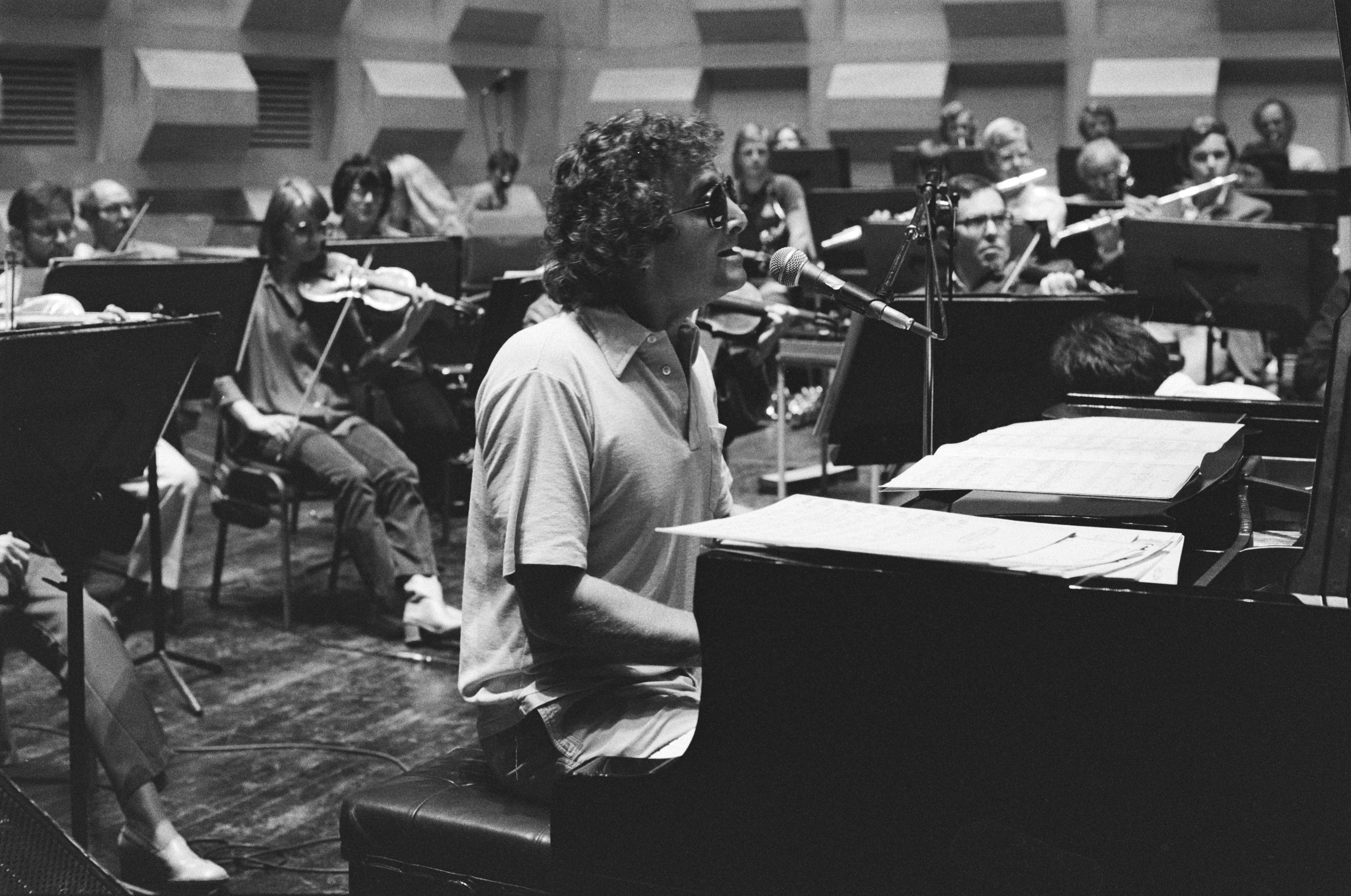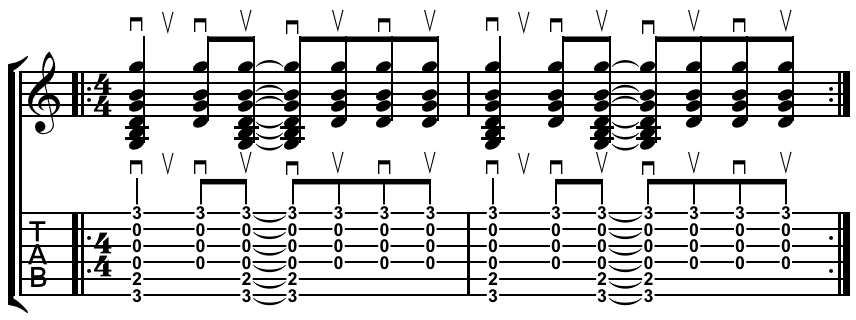|
I Love L.A.
"I Love L.A." is a song by the American singer Randy Newman. It was originally released on his 1983 album ''Trouble in Paradise (Randy Newman album), Trouble in Paradise''. The song is about Los Angeles, California, and its Hook (music), hook is its title, repeated, each time followed by an enthusiastic crowd cheering, "We love it!" Writing and recording Following the release of his sixth album ''Born Again (Randy Newman album), Born Again'' (1979), Newman procrastinated writing songs for a follow-up album, and spent a good portion of the next four years relaxing at home with his family. Newman jokingly noted that because he often lounged by the pool, the gardener had to water around him. To counter this lackadaisical lifestyle, Newman rented a recording studio in Los Angeles in 1983, which did not have any telephones to distract him. In this studio Newman recorded a song called "Something to Sing About", in which the narrator arrogantly boasts about the suburban opulence around ... [...More Info...] [...Related Items...] OR: [Wikipedia] [Google] [Baidu] |
Randy Newman
Randall Stuart Newman (born November 28, 1943) is an American singer, songwriter, arranger, pianist, composer, conductor and orchestrator. He is known for his non-rhotic Southern American English, Southern-accented singing style, early Americana (music), Americana-influenced songs (often with mordant or satirical lyrics), and various film scores. His hits as a recording artist include "Short People" (1977), "I Love L.A." (1983), and "You've Got a Friend in Me" (1995), and has written songs such as "Mama Told Me Not to Come" (1966), "I Think It's Going to Rain Today" (1968), and "You Can Leave Your Hat On" (1972). Born in Los Angeles to an extended family of Hollywood film composers, Newman began his songwriting career at the age of 17, penning hits for acts such as the Fleetwoods, Cilla Black, Gene Pitney, and the Alan Price Set. In 1968, he made his formal debut as a solo artist with the album ''Randy Newman (album), Randy Newman'', produced by Lenny Waronker and Van Dyke Park ... [...More Info...] [...Related Items...] OR: [Wikipedia] [Google] [Baidu] |
Mixing Engineer
A mixing engineer (or simply mix engineer) is responsible for combining ("mixing") different sonic elements of an auditory piece into a complete rendition (also known as "final mix" or "mixdown"), whether in music, film, or any other content of auditory nature. The finished piece, recorded or live, must achieve a good balance of properties, such as volume, pan positioning, and other effects, while resolving any arising frequency conflicts from various sound sources. These sound sources can comprise the different musical instruments or vocals in a band or orchestra, dialogue or Foley in a film, and more. The best mixing professionals typically have many years of experience and training with audio equipment, which has enabled them to master their craft. A mixing engineer occupies a space between artist and scientist, whose skills are used to assess the harmonic structure of sound to enable them to fashion desired timbres. Their work is found in all modern music, though ease of ... [...More Info...] [...Related Items...] OR: [Wikipedia] [Google] [Baidu] |
Name-dropping
Name-dropping (or name-checking) is the practice of naming or alluding to important people or institutions in order to indicate one's association with them. The term often connotes an attempt to impress others; it is usually regarded negatively, and under certain circumstances may constitute a breach of professional ethics. It may be done within a conversation,. a story, a song, an online identity, or other communication. When used as part of a logical argument it can be an example of the false authority fallacy. Purposes Name-dropping is used to position oneself within a social hierarchy. It is often used to create a sense of superiority by raising one's status. By implying (or directly asserting) a connection to people of high status, the name-dropper hopes to raise their own social status to a level closer to that of those whose names they have dropped, and thus elevate themselves above, or into, present company. Name-dropping can also be used to identify people with a com ... [...More Info...] [...Related Items...] OR: [Wikipedia] [Google] [Baidu] |
The Beach Boys
The Beach Boys are an American Rock music, rock band formed in Hawthorne, California, in 1961. The group's original lineup consisted of brothers Brian Wilson, Brian, Dennis Wilson, Dennis, and Carl Wilson, their cousin Mike Love, and their friend Al Jardine. Distinguished by their vocal harmonies, adolescent-oriented lyrics, and musical ingenuity, they are one of the most influential acts of the rock era. The group drew on the music of Traditional pop, older pop vocal groups, 1950s rock and roll, and black R&B to create their unique sound. Under Brian's direction, they often incorporated classical music, classical or jazz elements and Recording studio as an instrument, unconventional recording techniques in innovative ways. The Beach Boys formed as a garage band centered on Brian's songwriting and managed by the Wilsons' father, Murry Wilson, Murry. Jardine was briefly replaced by David Marks during 1962–1963. In 1963, they enjoyed their first national hit with "Surfin' U.S ... [...More Info...] [...Related Items...] OR: [Wikipedia] [Google] [Baidu] |
Pop Rock
Pop rock (also typeset as pop/rock) is a fusion genre and form of rock music characterized by a strong commercial appeal, with more emphasis on professional songwriting and recording craft, and less emphasis on attitude than standard rock music. Originating in the late 1950s as an alternative to normal rock and roll, early pop rock was influenced by the Beat (music), beat, arrangements, and original style of rock and roll (and sometimes doo-wop). It may be viewed as a distinct genre field rather than music that overlaps with Pop music, pop and rock. The detractors of pop rock often deride it as a slick, commercial product and less Authenticity in art#Authenticity of performance, authentic than rock music. Characteristics and etymology Much pop and rock music has been very similar in sound, instrumentation and even lyrical content. The terms "pop rock" and "power pop" have been used to describe more commercially successful music that uses elements from, or the form of, roc ... [...More Info...] [...Related Items...] OR: [Wikipedia] [Google] [Baidu] |
Eskimo
''Eskimo'' () is a controversial Endonym and exonym, exonym that refers to two closely related Indigenous peoples: Inuit (including the Alaska Native Iñupiat, the Canadian Inuit, and the Greenlandic Inuit) and the Yupik peoples, Yupik (or Siberian Yupik, Yuit) of eastern Siberia and Alaska. A related third group, Aleuts, who inhabit the Aleutian Islands, are generally excluded from the definition of ''Eskimo''. The three groups share a relatively recent common ancestor, and speak related languages belonging to the family of Eskaleut languages. These circumpolar peoples have traditionally inhabited the Arctic and subarctic regions from eastern Siberia (Russia) to Alaska (United States), Northern Canada, Nunavik, Nunatsiavut, and Greenland. Some Inuit, Yupik, Aleut, and other individuals consider the term ''Eskimo'', which is of a disputed etymology, to be pejorative or even offensive. ''Eskimo'' continues to be used within a historical, linguistic, archaeological, and cultural ... [...More Info...] [...Related Items...] OR: [Wikipedia] [Google] [Baidu] |
The Lady Is A Tramp
"The Lady Is a Tramp" is a show tune from the 1937 Rodgers and Hart musical '' Babes in Arms'', in which it was introduced by former child star Mitzi Green. This song is a spoof of New York high society and its strict etiquette (the first line of the verse is "''I get too hungry for dinner at eight''...") and phony social pretensions. It has become a popular music standard. The song appears in the film version of '' Babes in Arms'' (1939) as an instrumental version only. Recordings Early recordings from 1937 include one by Tommy Dorsey and His Orchestra (featuring Edythe Wright on vocals), Midge Williams and Her Jazz Jesters, Sophie Tucker, and Bernie Cummins on the Vocalion records label (#3714). Lena Horne recorded the song with the Metro-Goldwyn-Mayer Studio Orchestra on March 30, 1948. Her performance appeared in the film '' Words and Music'', a fictionalized biography of the partnership of Rodgers and Hart. The song was also used in the film version of '' Pal Joey' ... [...More Info...] [...Related Items...] OR: [Wikipedia] [Google] [Baidu] |
Rodgers And Hart
Rodgers and Hart were an American songwriting partnership between composer Richard Rodgers (1902–1979) and the lyricist Lorenz Hart (1895–1943). They worked together on 28 stage musicals and more than 500 songs from 1919 until Hart's death in 1943.Rodgers and Hart Biography Guide to Musical Theatre, accessed April 5, 2009 Many of their songs are classics of the American songbook. History Richard Rodgers and Lorenz Hart were introduced in 1919 while Rodgers was in high school and Hart had already graduated from |
Verse (music)
Song structure is the arrangement of a song, and is a part of the songwriting process. It is typically sectional, which uses repeating forms in songs. Common piece-level musical forms for vocal music include bar form, 32-bar form, verse–chorus form, ternary form, strophic form, and the 12-bar blues. Popular music songs traditionally use the same music for each verse or stanza of lyrics (as opposed to songs that are "through-composed"—an approach used in classical music art songs). Pop and traditional forms can be used even with songs that have structural differences in melodies. The most common format in modern popular music is introduction (intro), verse, pre-chorus, chorus, verse, pre-chorus, chorus, bridge, and chorus, with an optional outro. In rock music styles, notably heavy metal music, there is usually one or more guitar solos in the song, often found after the middle chorus part. In pop music, there may be a guitar solo, or a solo performed with another instrument su ... [...More Info...] [...Related Items...] OR: [Wikipedia] [Google] [Baidu] |
AllMusic
AllMusic (previously known as All-Music Guide and AMG) is an American online database, online music database. It catalogs more than three million album entries and 30 million tracks, as well as information on Musical artist, musicians and Musical ensemble, bands. Initiated in 1991, the database was first made available on the Internet in 1994. AllMusic is owned by RhythmOne. History AllMusic was launched as ''All-Music Guide'' by Michael Erlewine, a "compulsive archivist, noted astrologer, Buddhist scholar, and musician". He became interested in using computers for his astrological work in the mid-1970s and founded a software company, Matrix, in 1977. In the early 1990s, as compact discs (CDs) replaced LP record, LPs and cassette (format), cassettes as the dominant format for recorded music, Erlewine purchased what he thought was a CD of early recordings by Little Richard. After buying it, he discovered it was a "flaccid latter-day rehash". Frustrated with the labeling, he res ... [...More Info...] [...Related Items...] OR: [Wikipedia] [Google] [Baidu] |
Rhythm Guitar
In music performances, rhythm guitar is a guitar technique and role that performs a combination of two functions: to provide all or part of the rhythmic pulse (music), pulse in conjunction with other instruments from the rhythm section (e.g., drumkit, drum kit, bass guitar); and to provide all or part of the harmony, i.e. the guitar chord, chords from a song's chord progression, where a chord is a group of notes played together. The basic technique of rhythm guitar is to hold down a chord sequence, series of chords with the fretting hand while strumming or fingerpicking rhythmically with the other hand. More developed rhythm techniques include arpeggios, Damping (music)#Guitar, damping, riffs, chord solos, and complex strums. In ensembles or bands playing within the Acoustic music, acoustic, country music, country, blues, rock music, rock or Heavy metal music, metal genres (among others), a guitarist playing the rhythm part of a composition plays the role of supporting the melod ... [...More Info...] [...Related Items...] OR: [Wikipedia] [Google] [Baidu] |
Waddy Wachtel
Robert "Waddy" Wachtel (born May 24, 1947) is an American musician, composer and record producer, most notable for his guitar work. Wachtel has worked as session musician for other artists such as Linda Ronstadt, Beth Hart, Stevie Nicks, Miranda Lambert, Kim Carnes, Randy Newman, Keith Richards, The Rolling Stones (lead guitar on "Saint of Me"), Jon Bon Jovi, James Taylor, Iggy Pop, Warren Zevon, Bryan Ferry, Michael Sweet, Jackson Browne, Karla Bonoff, The Motels and Andrew Gold, both in the studio and live. Early years Wachtel was born May 24, 1947, in Jackson Heights, Queens, Jackson Heights to a Jewish family in the New York City borough of Queens. At about age 9–10, Wachtel began to learn to play the guitar, taking lessons with teacher Gene Dell (who insisted that he learn to play right-handed despite being naturally left-handed) until about age 14. At that age, he says, he began writing songs. Wachtel also studied with Rudolph Schramm, who was the head of the NBC staff or ... [...More Info...] [...Related Items...] OR: [Wikipedia] [Google] [Baidu] |






